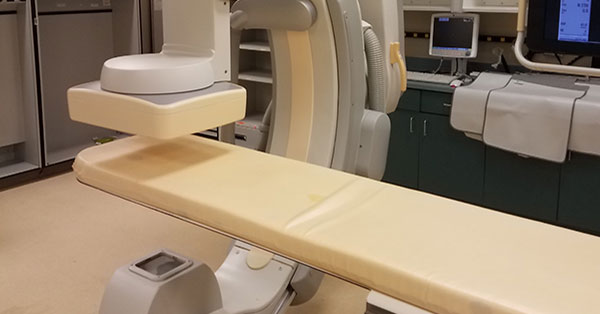
As you begin your search for a new cath lab, the number of choices and options can be overwhelming- manufacturers, configurations, applications, accessories. There's a lot of legwork to be done and a lot of "pre-decisions" that will need to be considered before you finalize your overall cath lab purchasing decision. To help you lay your groundwork, we've compiled three key questions to narrow down the systems in front of you. These are the questions we ask everyday in conversations with buyers to help them find the best fit for their cath lab needs.
How to Choose a Cath Lab System
What type of procedures will you perform most often?
Different types of interventional work call for different characteristics in a cath lab. By specialty, the two biggest determiners are detector size and whether a system is single-plane or bi-plane. The following are typical choices for a variety of specialties:
• Cardiac: Look for a small detector
• Philips FD10, GE Innova 2100, Siemens Axiom Artis dFC or dTC
• Angiography: Look for a large detector
• Philips FD20, GE Innova 4100, Siemens Axiom Artis dFA or dTA
• Some cardiac/some angio: Look for a mid-sized detector
• GE Innova 3100
• Electrophysiology: Look for a bi-plane system with a small detector
• Philips Allura XPER FD10/10, GE Innova 2121, Siemens Axiom Artis dBC,
• Neurology: Look for a bi-plane system with a large detector
• Philips Allura XPER FD20/20, GE Innova 3131, Siemens Axiom Artis dBA
What Siemens Axiom Artis Initials Mean
Can your site accommodate a floor, or ceiling-mounted system?
To be clear, both floor and ceiling-mounted systems require some form of ceiling structure to hang the overhead monitor suspension. The difference is that ceiling-mounted systems suspend the gantry or “C” from the ceiling and require a much more robust structure to hold its considerable weight as well. Ceiling mounts also require a higher ceiling to provide floor clearance for the gantry in its lowest position.
Common examples of floor-mounted systems include the GE Innova series and any Siemens Axiom Artis model with an "F" in its designation. Common examples of ceiling-mounted systems include the Philips FD10 and FD20 and any Axiom Artis with a "T" in its designation.
If your specialty has you considering a bi-plane lab, you’ll need to account for both a floor and a ceiling-mounted gantry.
Cath Lab Positioners: Floor-Mounted vs Ceiling-Mounted
New construction, or replacing an existing unit?
New construction is typically easier to adapt to either style of system. Your future room is a blank slate for whatever type of equipment you may want to install in it. If you are replacing an existing cath lab system, it is typically easiest (and cheapest) to replace it with a like-mounted system (ceiling with ceiling, floor with floor).
The Takeaway
While there will be many more considerations ahead of you in the cath lab buying process, these first three should help you reduce the field of options to a mere handful of systems. If you'd like to learn more about the rest of your cath lab project, you can use the button below to start the conversation with our cath lab team.

Kenn Dextrom
Kenn Dextrom is the Director of Product Manager at Block Imaging. He aims to provide clear direction and careful planning for Interventional Cath Lab buyers and working with the Block Imaging product team to provide excellent solutions for our customers. Out of the office, he spends most of his time keeping up with his wife and their three energetic sons.





